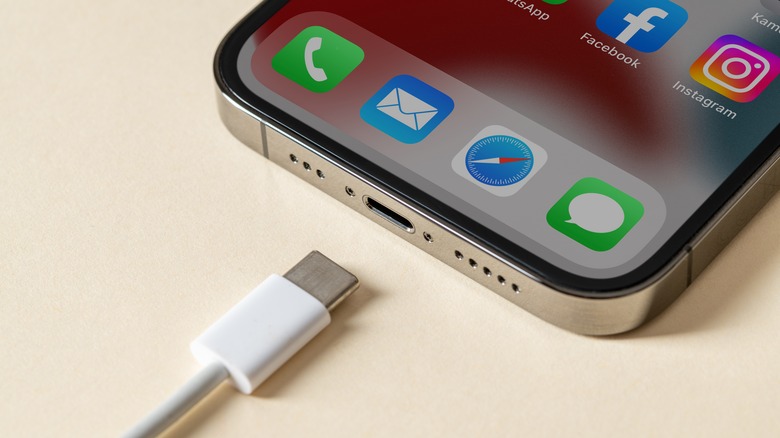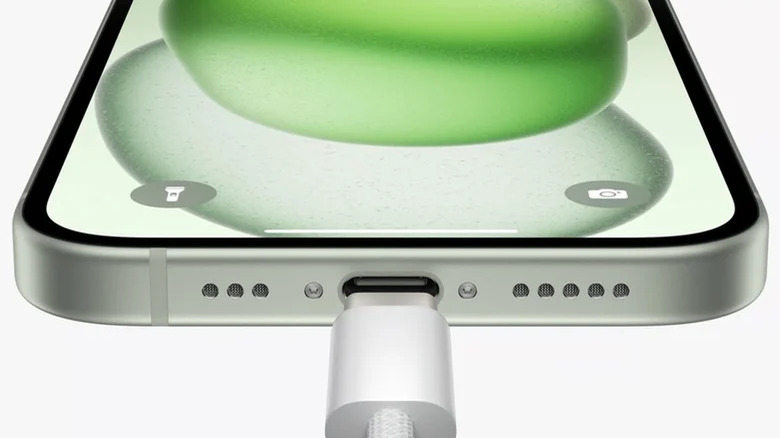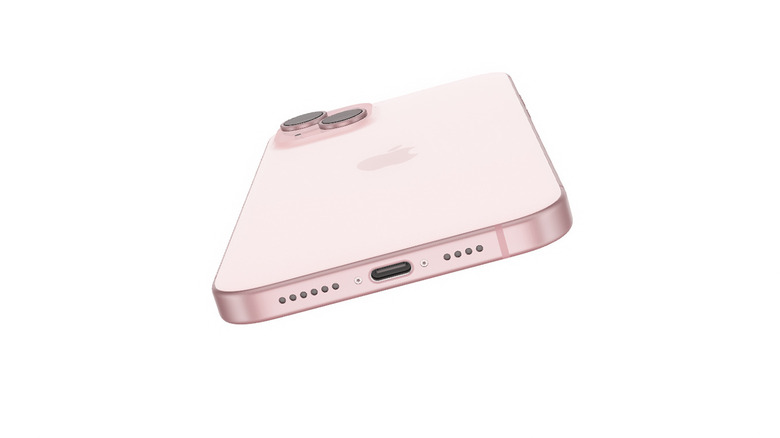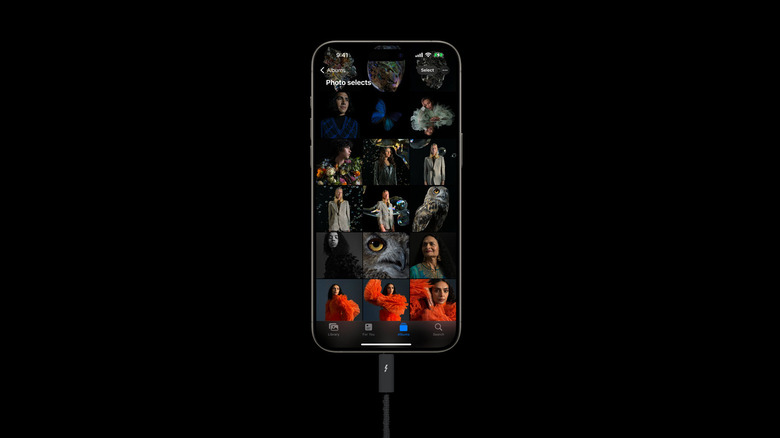iPhone 15 Vs. iPhone 15 Pro: The Big USB-C Difference You Can't See
With the iPhone 15, Apple is finally adopting USB Type-C and forgoing its longstanding resistance to moving away from the proprietary Lightning port. While Apple gave itself a pat on the back for switching to USB-C, the decision is backed by the European Union's directive, which requires every smartphone, tablet, and audio accessory (such as headphones) to use a standard – USB-C – jack by 2024.
Although Apple now complies with the EU's decree, it coyly takes advantage of the confusing USB standards when choosing the underlying technologies for the iPhone 15's USB-C port. A slower USB-C port is among the ways that Apple discriminates against the iPhone 15 and the iPhone 15 Plus — in a plausible effort to promote the Pro models.
The iPhone 15's inferior USB-C port can result in slower data transfer and charging than the iPhone 15 Pro. In this article, we break down the underpinnings of the iPhone 15 Pro's better USB-C port and how it matters if you choose to buy the non-Pro models.
iPhone 15 vs. iPhone 15 Pro: Shocking USB-C differences
While "USB" is commonly used to describe the ubiquitous USB Type-A connector, USB's specifications vary significantly across generations. Meanwhile, USB-C is only a physical interface and denotes the type of plug without indicating the specification driving it. These complications allow companies to use any core configuration, and Apple exploits this by deploying different generations of USB protocols on the new iPhone 15 and iPhone 15 Pro.
For the iPhone 15 and the iPhone 15 Plus, the USB-C port leverages the age-old USB 2.0 technology introduced in 2000. It limits the data transfer speeds to 480Mbps and does not represent any improvement over the Lightning connector that relies on the same USB standard.
The USB-C port on the iPhone 15 Pro and the iPhone 15 Pro Max on the other hand, offers transfer speeds of up to 10Gbps because its USB-C port relies on USB 3 protocol. While Apple does not specify the exact subgeneration, specifications conform with USB 3.1 Gen 2, which is identical to USB 3.2 Gen 2. To avoid confusion, the USB Implementers Forum (USB-IF) recommends addressing this protocol as "USB 10Gbps" or "SuperSpeed+ 10Gbps."
The iPhone 15 Pro likely also lacks support for Thunderbolt over USB-C. Thunderbolt is a faster transfer protocol with transfer speeds up to 40Gbps and is offered on other Apple devices with USB-C ports, including MacBook Pro (2016 and later), 12-inch MacBook, MacBook Air (2018 and later), and iPad Pro (M1 and later).
iPhone 15 vs. iPhone 15 Pro: Charging speeds
Apple makes a vague claim about the iPhone 15 gaining 50% battery with 30 minutes of charging using an official 20W charger — across all four models. But because of the different battery sizes, the iPhone 15 and iPhone 15 Pro are also expected to have different charging speeds. Since Apple does not specify the exact battery capacities (though third parties have confirmed it's not much of an upgrade), our assumptions about charging speeds are based on other devices with similar ports.
Another recent Apple device to receive the underpowered USB-C port (based on USB 2.0) as the iPhone 15 is the 10th-Gen iPad, introduced in October 2022. Based on some out-of-lab tests, the 10th iPad supports a maximum charging speed of 29 watts. The same may be expected of the iPhone 15.
Meanwhile, the iPhone 15 Pro's USB-C port shares the same USB protocol as the 2022 iPad Air 5th-Gen with M1 silicon (the iPad Pro M1 and M2 support more advanced USB 4 ports). The iPad Air is reported to reach a maximum charging rate of 36W — even though a USB 3.1 Gen 2 port, in theory, supports charging up to 100W.
These charging speeds can be attained only with a charger higher than their maximum rates. Therefore, you might benefit from using a MacBook charging brick or any third-party charger with claimed speeds higher than presumably supported by the iPhone 15.
The oddity of Apple's carbon neutrality
At the iPhone 15's launch event, Apple put up a theatrical performance including actor Octavia Spencer as "Mother Nature" and employees, including CEO Tim Cook, to make persuasive claims about its sustainability and recycling initiatives. Somewhat similar has been Apple's bid for avoiding to switch to USB-C. In the past, it has opposed the EU's decision to mandate USB-C on mobile devices by claiming that changing from the Lightning connector would lead to humungous electronic waste (e-waste) as users discard their Lightning cables — the same rationale as it used while stopping to include chargers. In practice, however, Apple takes a contradictory approach by including a low-powered USB-C to USB-C cable, based on USB 2.0, with the iPhone 15 and iPhone 15 Pro.
This simply means if you want faster transfer speeds, you must buy a separate USB 3-compliant cable for your iPhone 15 Pro. This could also affect charging speeds on the iPhone 15 Pro, but we would wait until we try the phones ourselves before making concrete claims.
You're in luck if you already own a pre-MagSafe-revival MacBook Air or MacBook Pro since those devices already support faster charging. But if you don't own any of those devices, you must buy an official or a third-party cable with faster charging speeds. Further, if you wish to use older accessories such as EarPods with a Lightning connector, you must buy a $29 Lightning to USB-C dongle separately.



